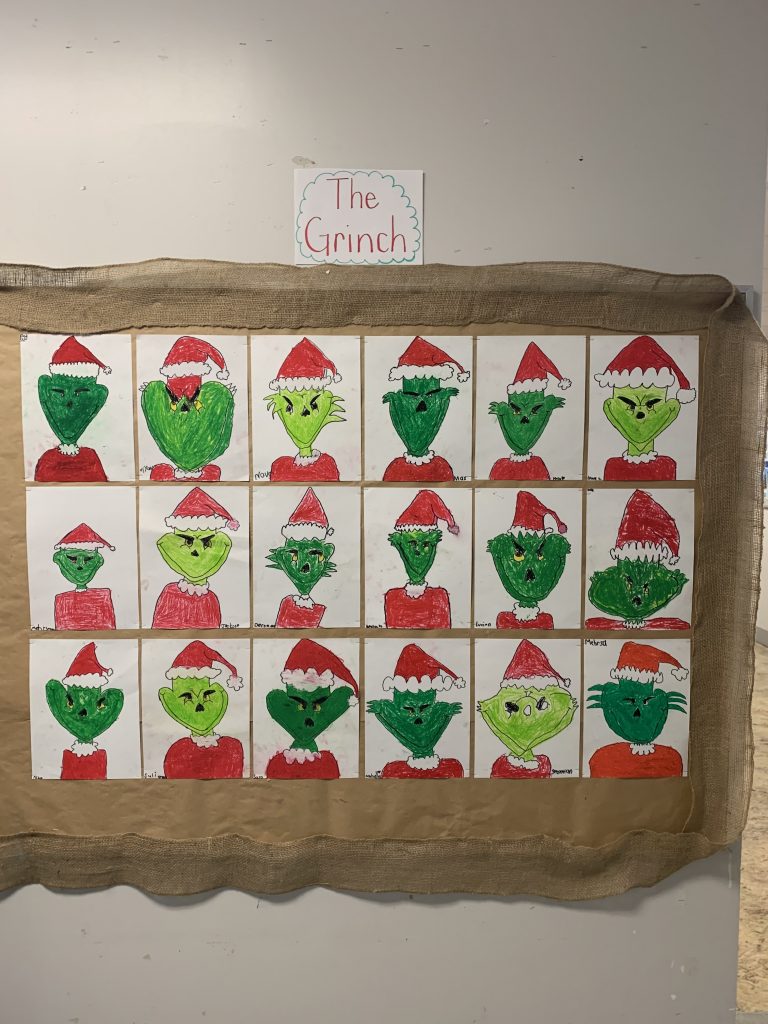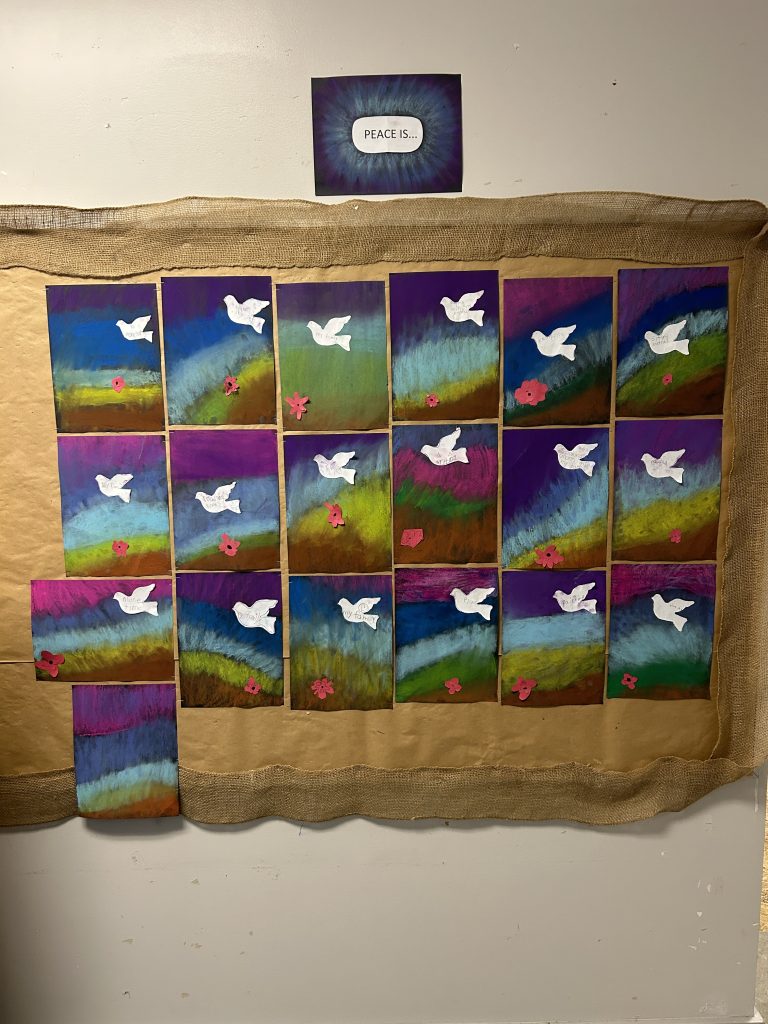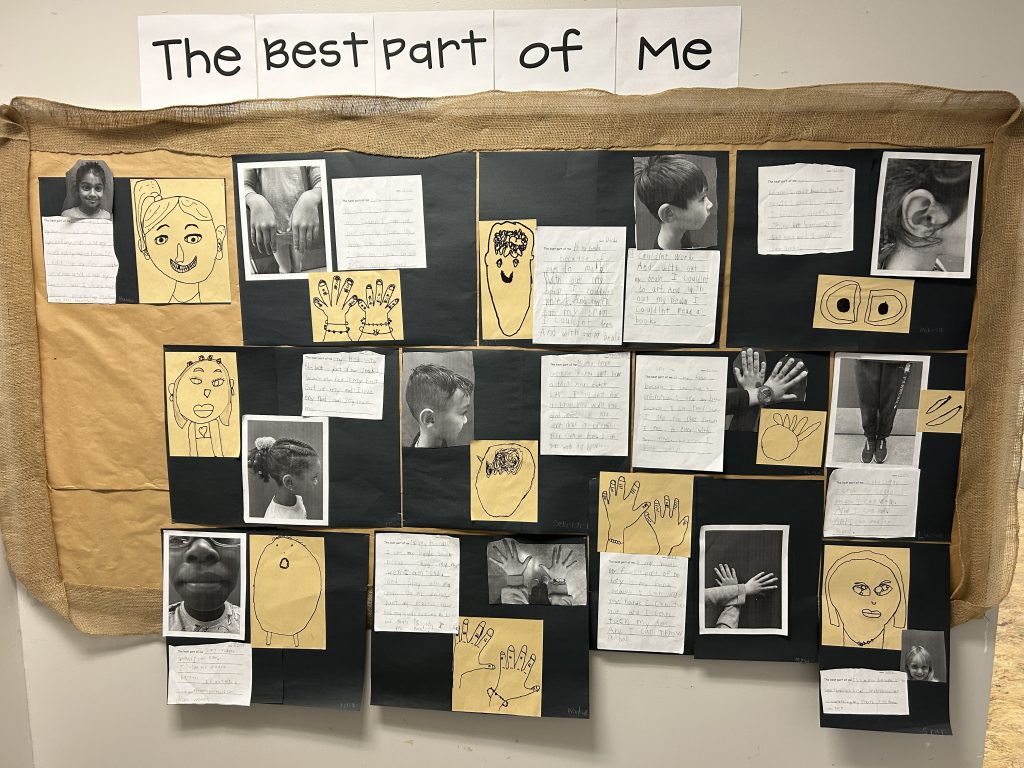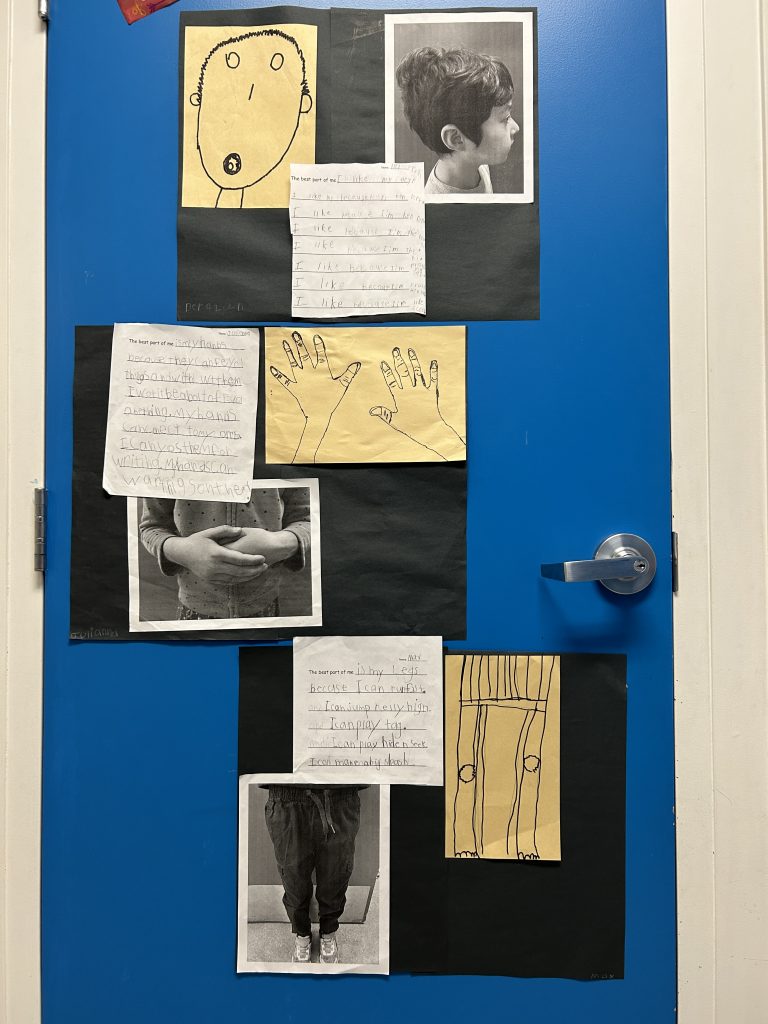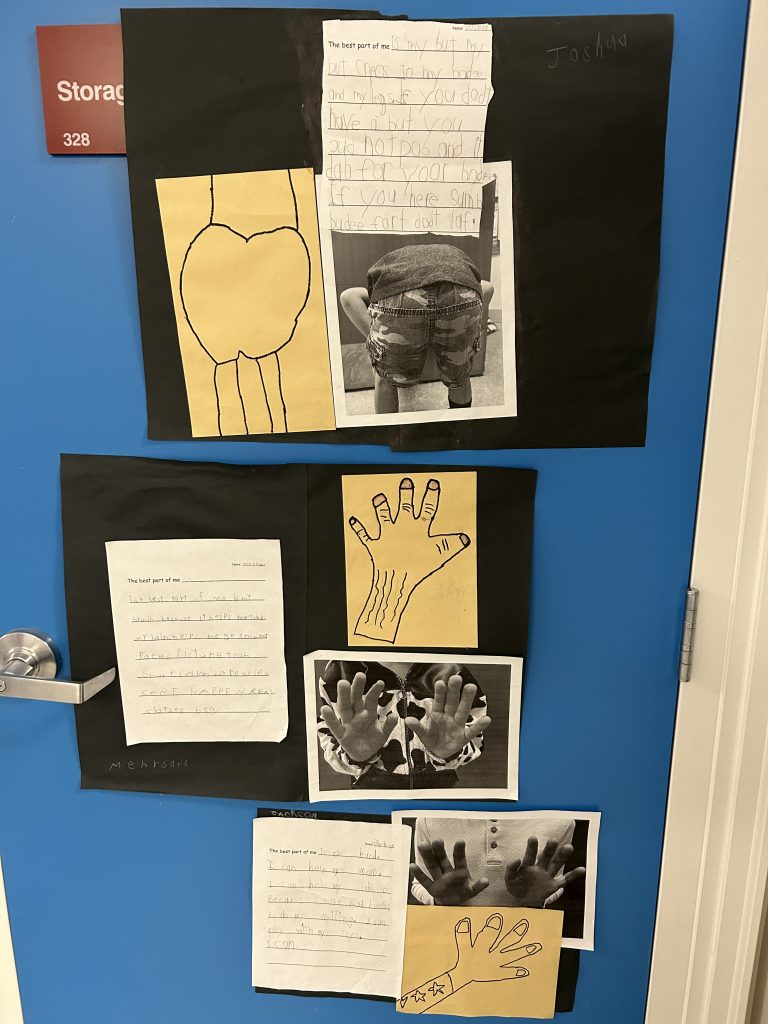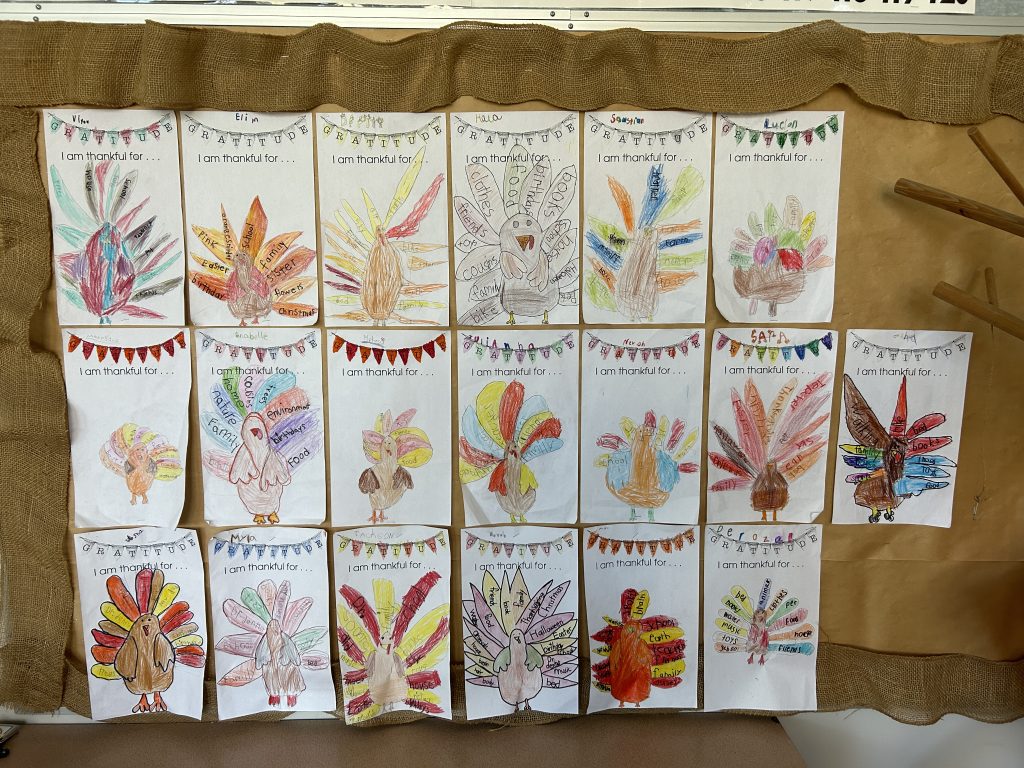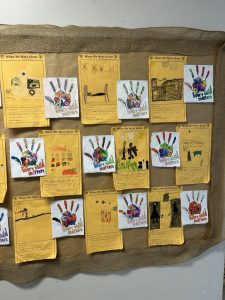December is here! The Grinch Art Activity:
For this art lesson we did a step by step directed drawing of the Grinch. We learned how to draw all of the parts together. The students particularly loved his huge grin! The next day, we coloured our Grinch using a new medium, oil pastels, as they have such an intense hue. We talked about the colours to use for the Grinch and how to fully fill in all of the sections (we had to take breaks, as our hands got tired – students had to press hard with the pastels.) The students were all proud of their own Grinch and they look awesome together. It’s amazing how one lesson can produce 18 different Grinches! We will read the story next week.
Big Idea: Inquiry through the arts creates opportunities for risk taking
First Peoples Principles of Learning:
- Learning takes time and patience
Curricular Competencies:
- Explore elements, processes, materials, movements, technologies, tools, and techniques of the arts
- Develop processes and technical skills in a variety of art forms to refine artistic abilities
Content:
- elements of design: line, shape, texture, colour, form
Core Competency: Creative Thinking
- Creative growth requires patience, readiness to take risks, and willingness to try new approaches
Learning involved:
- Students learned the significance of following step-by-step instructions, including learning to draw each section of the Grinch
- Students learned how to outline their Grinch with a sharpie
- Students chose their shade of green and coloured the Grinch carefully by fully filling in each section
- Students will respond in writing to what they would do to make the Grinch grin
